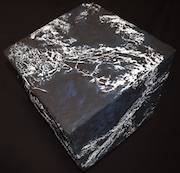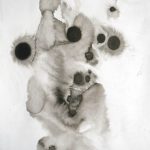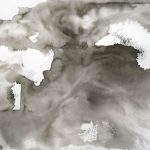Answers for NAV on the Ambient scene
Questions from Allen Bogle, October 1998
1) What direction do you think it is heading?
2) What do you personally think defines what you are doing as it relates to the ambient scene?
3) Who are you listening to right now in the ambient scene?
When people say “ambient” these days they might mean any of several things. The word often describes the territory that grew out of the techno dance scene, which I think has become so cliche-ridden that it has outgrown its freshness. With labels like Fax and Subharmonic (among others) flooding the market several years ago with quickly thrown-together disposable CDs, many listeners came to discount “ambient music” as lazy and unimaginative. Hopefully this trend has abated somewhat, and those people with interesting ideas and quality-oriented approaches may have outlasted the flood.
I think there is always going to be a small subset of listeners who seek something a bit more introspective, spacious and mysterious than the typical hyped-up offerings of popular music. This will never be a large enough minority to make “ambient music” a big business. That may be why, in the techno world, “ambient” has been absorbed back into the dance music from which it evolved. That leaves those few of us who never had anything to do with dance music, essentially a handful of perpetual outsiders, to struggle along in relative obscurity just because we’re doing what we love. That suits me fine, since I tend to be allergic to trends and usually divert myself from anything that seems too identifyable or trite.
I don’t see any one “scene” that is heading in any one direction. I see a bunch of individualists pursuing their own muse. Because of our default status as outsiders, many of us have become friends, but we still think very individually. We all listen to different types of music, and generally explore our own personal avenues of interest.
My own interests continue in the direction of audiophile sound experience, and an increased presence of acoustic sounds. Although I love the surrealism of electronics, I prefer the qualities of the air that surrounds well-recorded acoustic sounds. I want to create experiences that are intense, magical and mysterious, yet with the emotive impact and spatial clarity that typify the best acoustic recordings. I am looking forward to the next stage in audio system evolution, 24 bit audio and 5.1 surround sound. If I can ever afford to upgrade my studio into the new formats, I see a world of new possibilities for creating an all-encompassing listening experience. Since Ambient music supposedly deals more with space and texture than other types of music, these new tools should allow for a huge range of new expressive possibilities.
The irony about this evolution in sound system technology is that ambient recording artists are the most likely to be left behind (in the short term, at least) because of the economics of the genre. Most ambient musicians work in home studios, with self-financed projects, releasing CDs on small independent labels. These are the people least likely to be able to jump to the new formats that can best represent the promise of ambient music. Furhermore, the standard of sound quality for much of this music is going to have to increase quite a bit to take full advantage of the changes. That means taking a lot more time on each project, and learning your engineering chops along with the musical ones. I welcome these changes, actually, as I hope it will mean more carefully considered releases and perhaps fewer of them.
The other change that we are already seeing in the whole area of independent music is the wholesale move over to internet distribution. Soon it will be the very rare exception to find independent experimental music in neighborhood record stores. There are just too many releases out there for the stores to stock it all. Independent artists are already bypassing the system by direct distribution over the web, and this will probably become the only means of distribution for this music in a short time. I see a split growing between self-released independent music on one side (available only through the web); and mainstream corporate distribution on the other side, pushing only those artists who have a presence in music videos and large concert halls. I don’t know where this puts the audiophile recordings that I hope ambient musicians will aspire to, since I see CDs or MPEG3 as becoming the low-resolution format of choice for home-tapers, and DVD as the hi-resolution audiophile format. It may be a few years before many home-tapers will be able to afford to release their music on DVD. By that time, the split might be complete between the two worlds.
This is all speculation, of course. My only hope is that the lunatics who keep on making slow psychedelic music will still have an outlet for others to hear their experiments, and that they continue to listen to their own muses and ignore whatever trends and labels get attatched to what they do.
What am I listening to lately? Well, I like the new Nils Peter Molvaer CD on ECM (Khmer), and I like several of the new releases on the Hypnos label, expecially the David Tollefson and the new Saul Stokes CDs. I like Massive Attack’s “Mezzanine”, the new Mark Hollis CD (singer from Talk Talk), and Robert Wyatt’s “Shleep” among others.
All the best – Robert Rich, 16 October 1998






You must be logged in to post a comment.